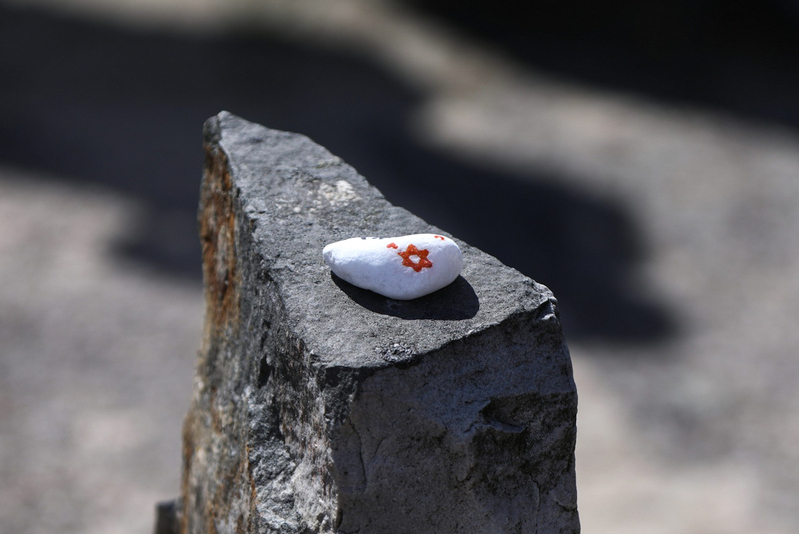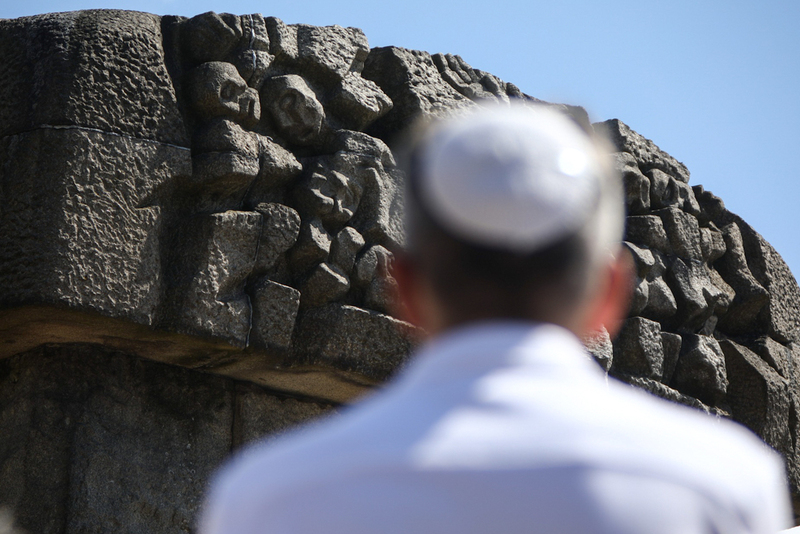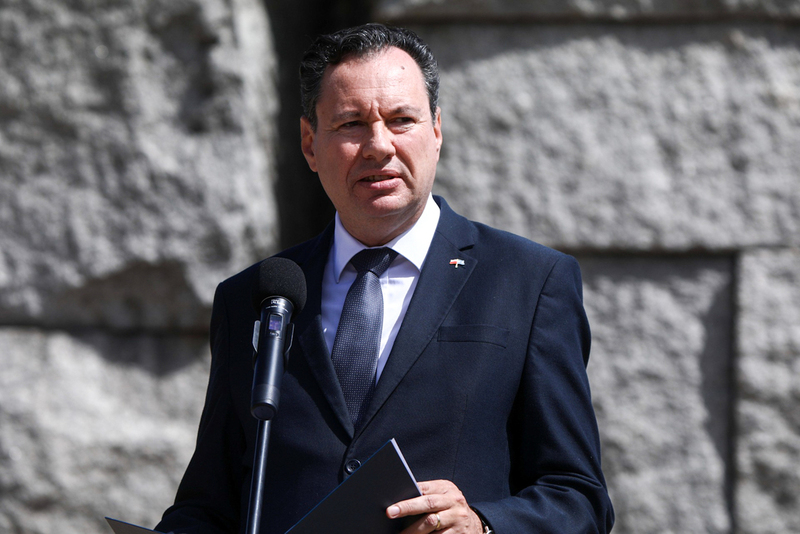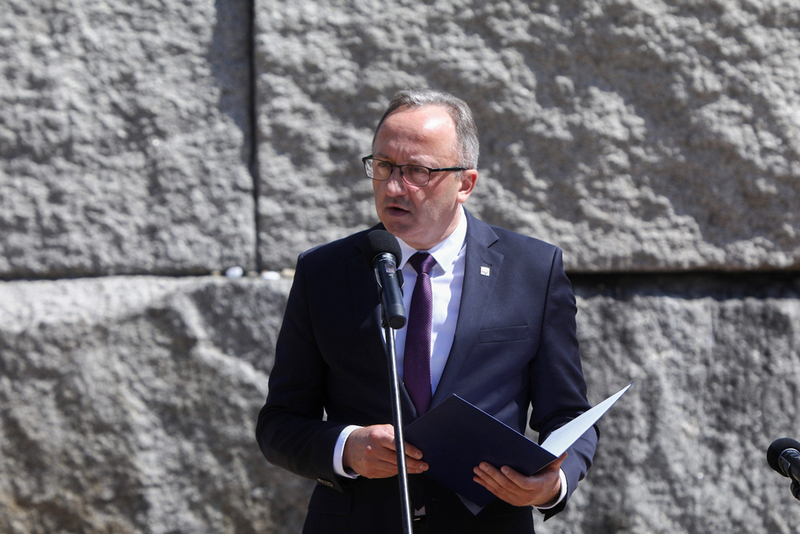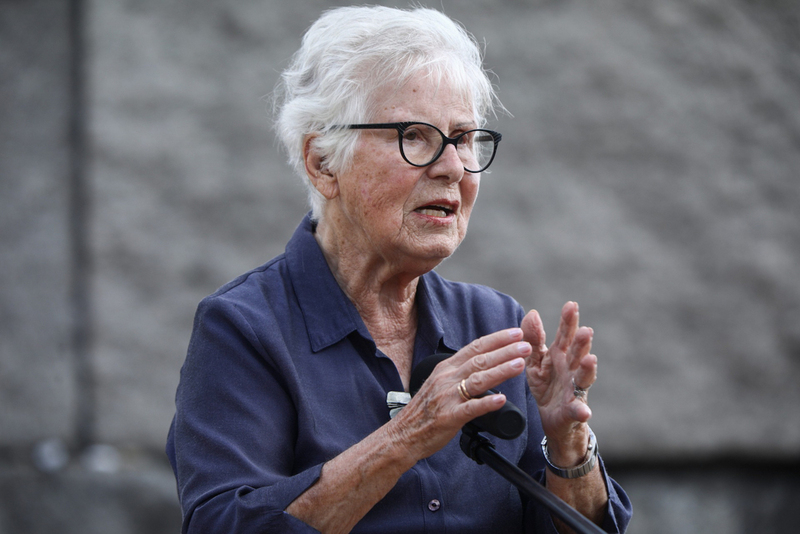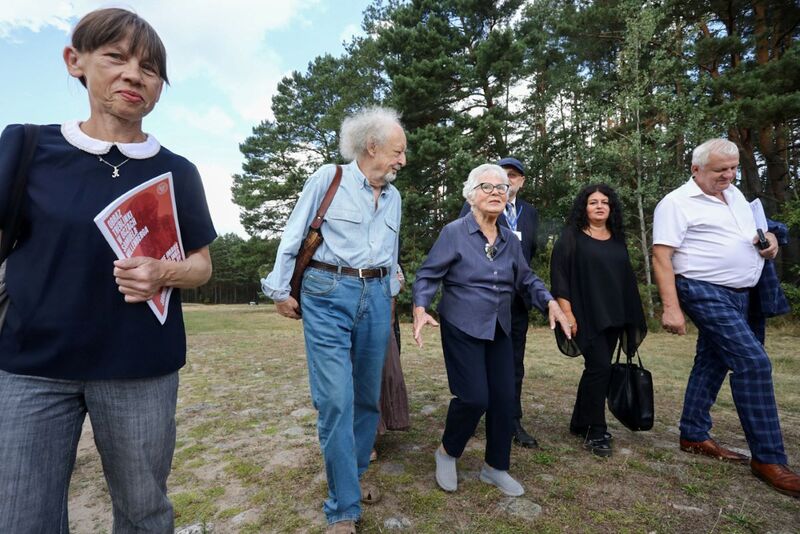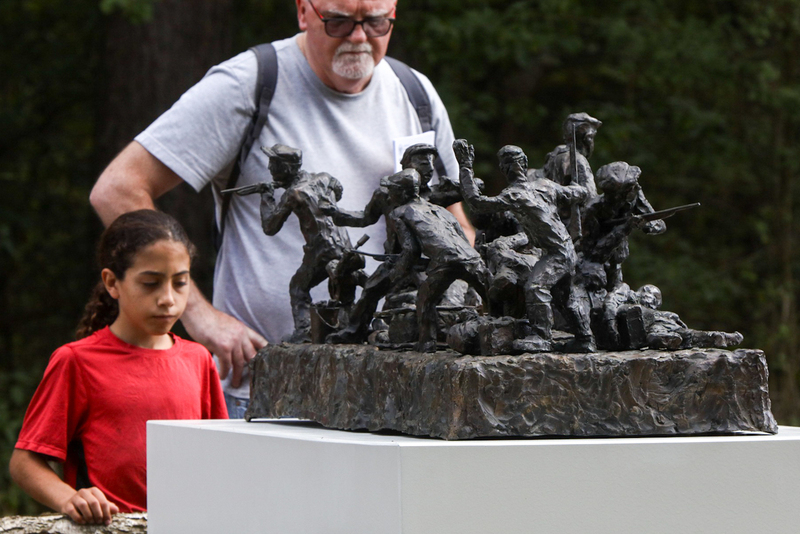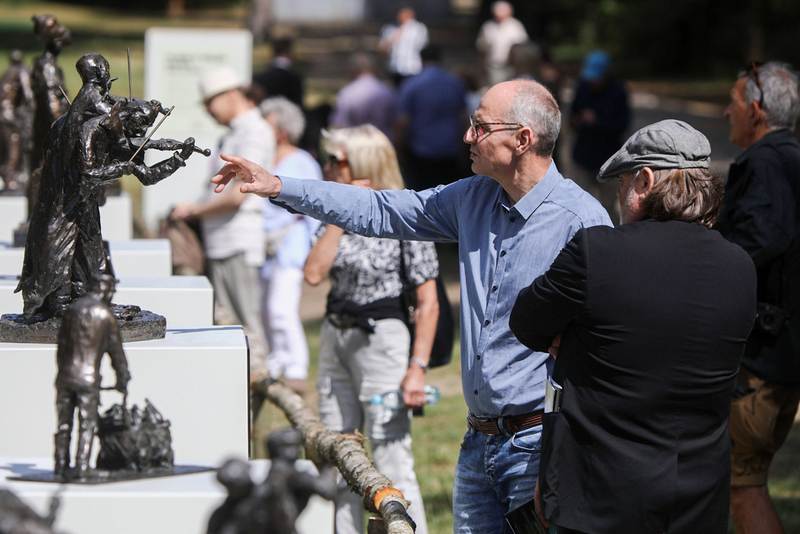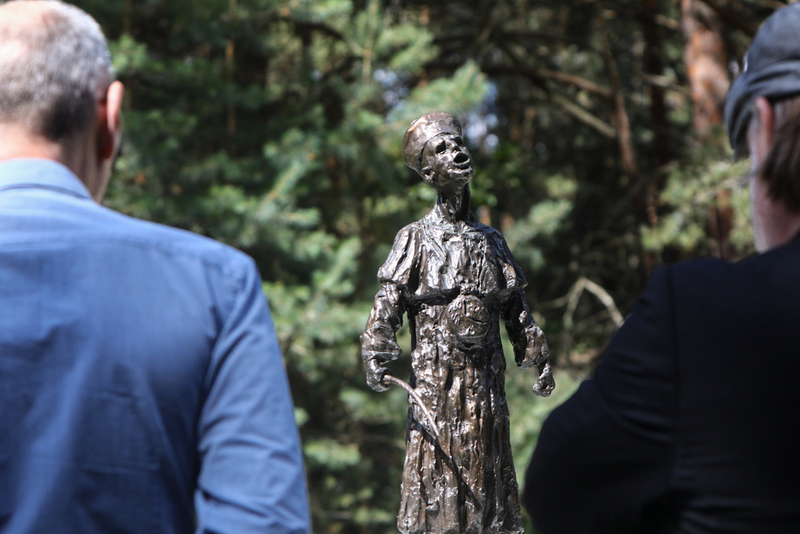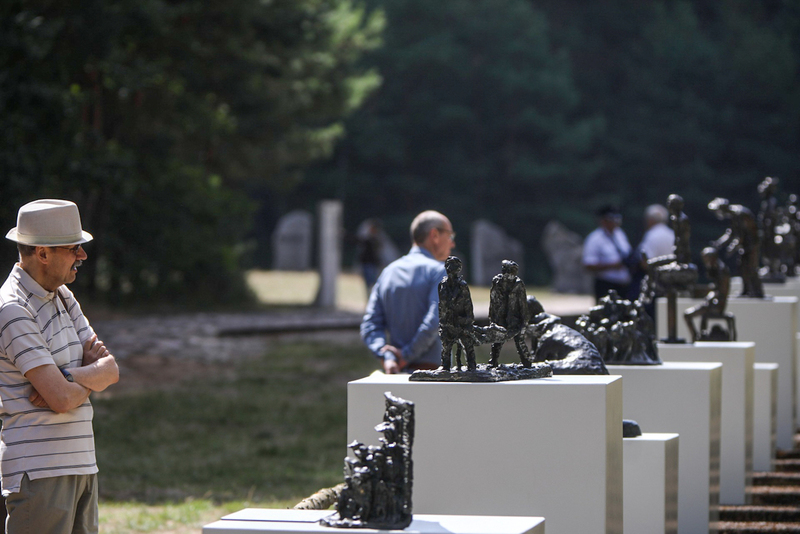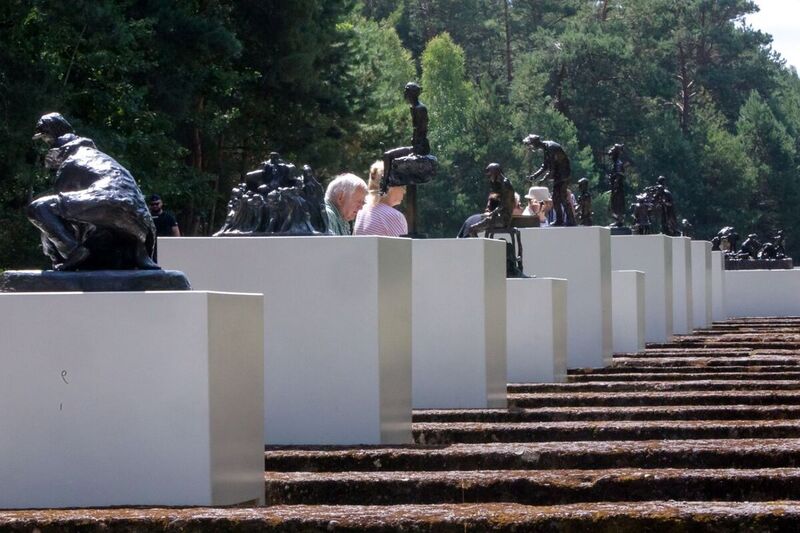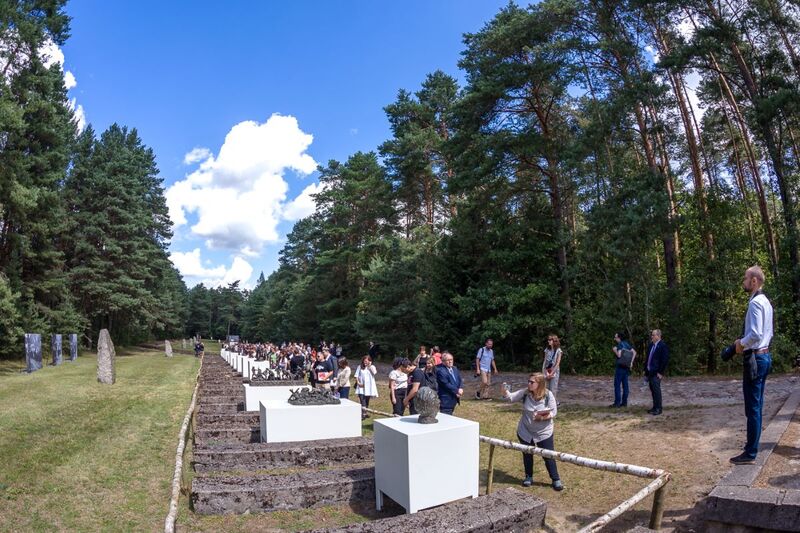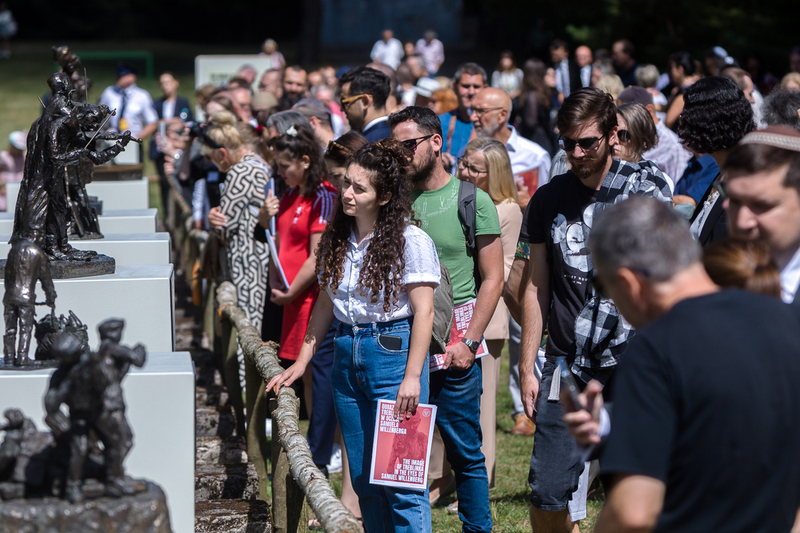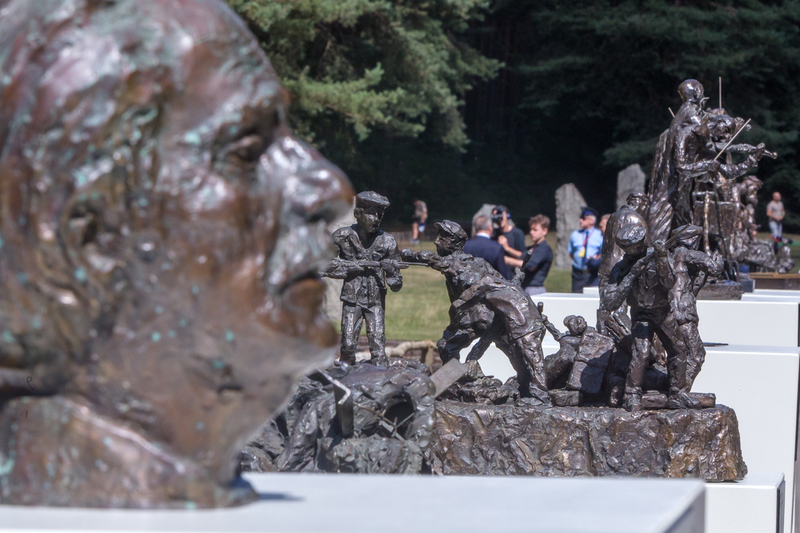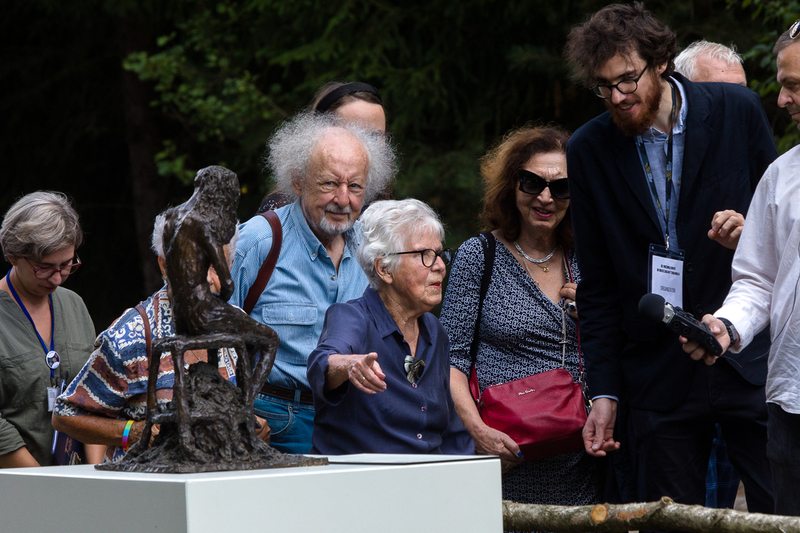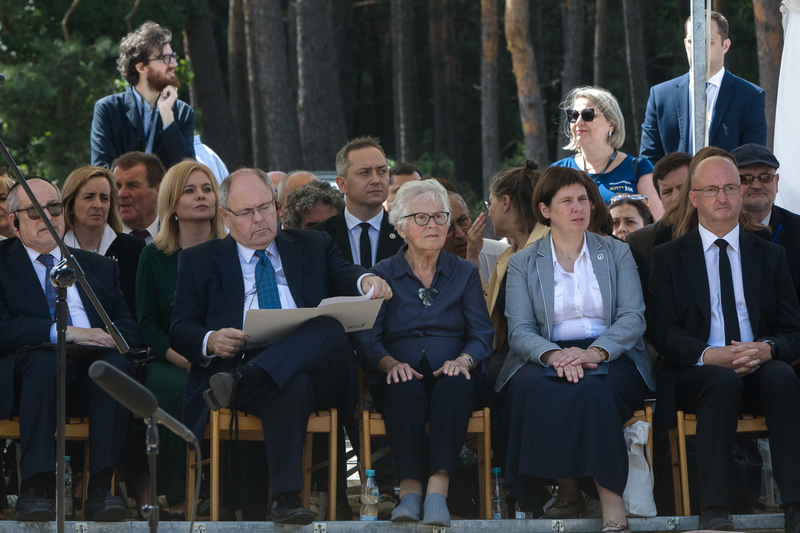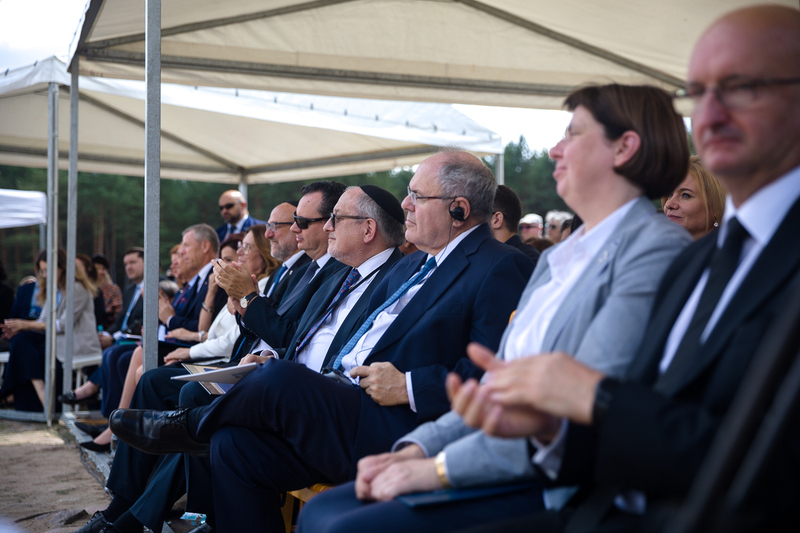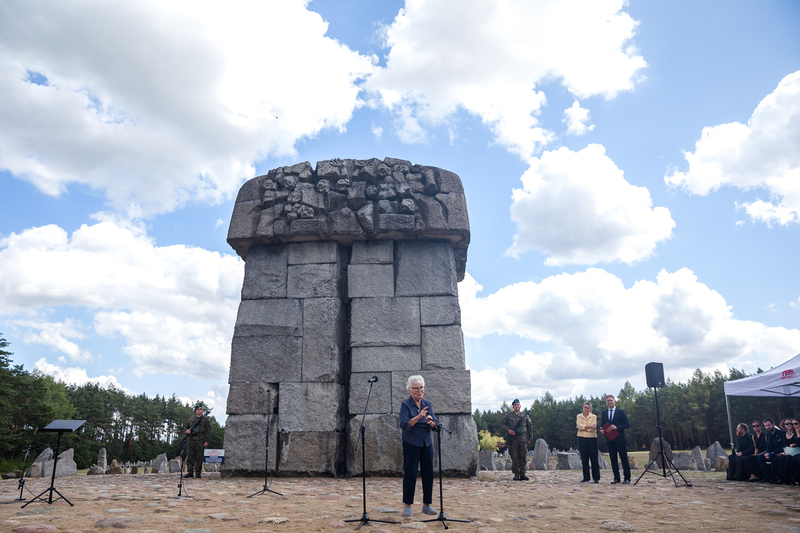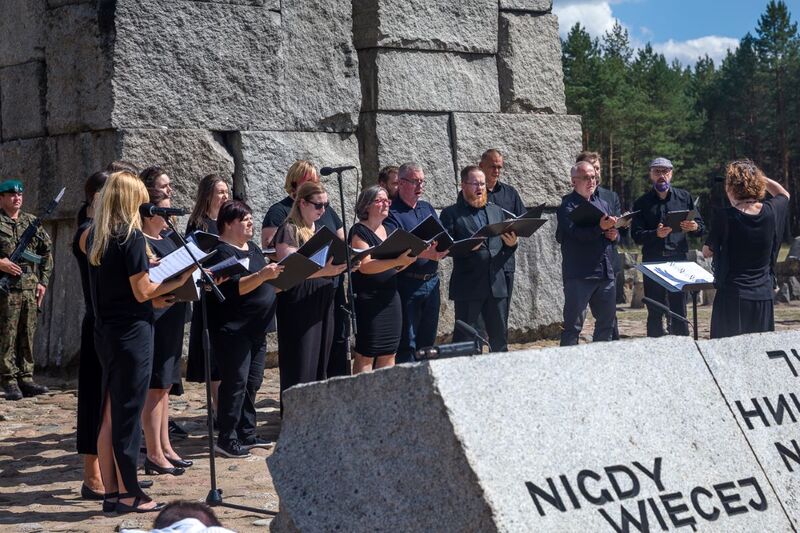On 2 August 1943, the Treblinka II death camp revolt began with the prisoners setting fire to camp buildings and attacking the guards. More than 700 prisoners took part in the revolt, about 200 managed to escape from the camp, and nearly 100 survived the war. Ceremonies commemorating the 80th anniversary were held at the Treblinka Museum on 2 August 2023.
The commemoration of the 80th anniversary of the revolt was organized on the initiative of the Emanuel Ringelblum Jewish Historical Institute in cooperation with the Treblinka Museum. Nazi German Nazi extermination and labor camp (1941-1944). Official ceremonies began at noon at the monument to the Victims of the Extermination Camp, which is located on the museum grounds. Representatives of state authorities, the Deputy Head of the Chancellery of the President of the Republic of Poland Piotr Ćwik, Deputy Speaker of the Senate Gabriela Morawska-Stanecka, Deputy Speaker of the Sejm Małgorzata Kidawa-Błońska, representatives of local governments, the clergy, Jewish circles among them the Director of the Yad Vashem Institute Dani Dayan, Ambassador of Israel Yacov Livne, Chief Rabbi of Poland Michael Schudrich, Deputy President of the Institute of National Remembrance Prof. Karol Polejowski and the widow of the longest surviving participant of the Treblinka revolt Samuel Willenberg - Ada Krystyna Willenberg were present at the event.
Before the main anniversary celebrations, the assembled guests were able to familiarize themselves with the open-air exhibition version of "The Image of Treblinka in the Eyes of Samuel Willenberg" exhibition organized by the IPN's International Cooperation Office. The exhibition of sculptures created by Samuel Willenberg was presented by Ada Willenberg herself:
I am very grateful to the Institute of National Remembrance, which has been looking after these sculptures, for the fact that they are being made available to so many people throughout Poland. Now they have found their way to Treblinka. This is the right place for them. It was my husband's dream for there to be a museum on these grounds where these sculptures would be presented.
The entire history of Treblinka is represented through these sculptures. They were created by my husband when he was in his 70s. When he retired, he remained full of vigor and said that he should portray in this way what Treblinka really looked like.
The new outdoor version of the exhibition, shown only on this symbolic day, is the culmination of an educational project conducted by the Institute since 2020. To date, the project based on 15 sculptures brought by the Institute of National Remembrance from Israel has toured many cities in Poland, and in 2023 was presented in the Polish Parliament. Perhaps soon the exhibits will stand in a pavilion at the Treblinka Museum in accordance with the Artist's last will.
During the welcoming speech, Monika Krawczyk, the Director of the Emanuel Ringelblum Jewish Historical Institute said:
About 900,000 Jews from Poland were murdered in the Treblinka death camp, mainly from Warsaw, but also from all of Mazovia, and all of Podlasie, and from larger cities such as Częstochowa and Piotrków Trybunalski. Citizens of the Czech Republic, Slovakia, Greece, the then Yugoslavia, Bulgaria Austria and Germany also died here, as well as representatives of other nationalities, including Roma.
Historians are not sure as to whether it was 800,000 or 900,000 people that died here. And I ask myself, how can you be wrong by about 100 thousand lives? 100 thousand lives are cities like Płock or Elblag. Is it possible to be wrong about an entire city? It is a fact that we do not know the names of these people. They were exterminated along with their memory of themselves. This was what we call a double crime.
The Deputy Head of the Chancellery of the President of the Republic of Poland Piotr Ćwik read out a letter from Polish President Andrzej Duda, in which the President noted that the uprising was an exceptionally dramatic event, as its participants thought not so much about their own salvation as about avenging the exterminated. They wanted to try to stop the genocide. Those who managed to save themselves were to pass on the story of Treblinka to the world.
The Deputy Speaker of the Sejm Małgorzata Kidawa-Błońska stressed that Treblinka:
This place, is a story of the heroism of the events dating back 80 years, when a group of fighters, heroes, who did not always believe in freedom and that there was any other way out, decided to find the light, get out of this hell and destroy the death camp. The rebellion they started was not only a cry of despair, but at the same time a cry of hope that perhaps the memory could be saved after all. They knew that they had to survive so that they could tell the world about what happened here. The witnesses to these events are no longer with us.
She added that now new generations must remember these events.
In his speech, IPN Deputy President Prof. Karol Polejowski, noted that the mission of the Institute is precisely to preserve the memory of heroes and victims of 20th century totalitarianisms.
Today, on the 80th anniversary of the uprising of the Jewish prisoners of the German Nazi concentration camp in Treblinka, we recall those events, showing due respect and tribute to the brave Polish citizens of Jewish origin who, in the face of the terrible enemy that was the German National Socialists and in the face of the systematic extermination carried out by them, with courage and dignity stood up to fight.
We pay tribute and honour the memory of all the victims of German genocide who perished in this camp and in other mass extermination camps.During her speech, Ada Willenberg pointed out that the prisoners who organized the uprising did not believe they would survive. The purpose of the revolt, was not to escape and save their lives. The main goal was the liquidation and destruction of the camp.
The speeches were followed by an inter-religious prayer performed by a Rabbi and representatives of the Polish clergy.
During the ceremony, the assembled guests listened to the song Lid fun tojt-lager Treblinka (Song of the Treblinka death camp) performed by the Chameleon Choir of the Mokotow District under the baton of Katarzyna M. Boniecka. The song was probably composed by Austrian Jew Konrad Mann, a former prisoner of the Treblinka II camp.
At the end of the celebration, the attendees laid wreaths and flowers at the monument to the Holocaust Camp Victims.
Samuel Willenberg, who died in 2016 was the last living survivor of the revolt. Samuel Willenberg was born in Częstochowa. He visited Poland every year with his relatives for the anniversary celebrations on 2 August. He left behind an artistic legacy - a series of sculptures depicting the lives of Treblinka prisoners and the revolt they began in order to save their dignity. The exhibition, according to the author's wishes, will eventually be housed in the Museum's newly built pavilion. On 1 August 2023, a plaque financed by the Institute of National Remembrance commemorating Samuel Willenberg and his father Perec was unveiled on the façade of an apartment building at 60 Marszałkowska Street in Warsaw.
Treblinka II Extermination Camp (July 1942 - November 1943)
COLLECTED CONTENT: "The Image of Treblinka in the Eyes of Samuel Willenberg" educational project
